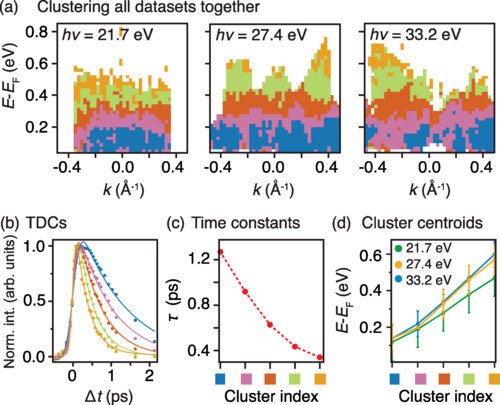Amidst its growing popularity and increasing usage as a tool, artificial intelligence (AI) has found yet another application – this time in a field of science that studies quantum materials.
Quantum materials are materials with properties that do not behave according to the laws of classical physics. Rather, they behave according to the stranger laws of quantum mechanics. Their special properties make them an attractive target for research and development, as they hold great potential in unlocking new technologies that can allow for the creation of more efficient electronics, advanced quantum computers and more.
In their research paper published early this year in Physical Review Research, scientists from Aarhus University, St. Andrews University, Leibniz IFW Dresden, Kyiv Academic University, Würzburg-Dresden Cluster of Excellence, the Max Planck Institute for Solid State Research and the CLF described a groundbreaking approach of using machine learning to uncover the secrets of a lab-grown platinum bismide (PtBi2) crystal, comprising alternating layers of platinum and bismuth. This complex quantum material has recently been found to host special superconducting states that are confined to the crystal's surface. Superconductors are potentially useful in a range of fields, such as energy transmission and magnetic levitation.
The team of scientists used the CLF Artemis group's recently upgraded 100 kilohertz laser and new extreme ultraviolet beamline to perform time- and angle-resolved photoemission spectroscopy (TR-ARPES) on the crystal. Owing to the complexity of the material, multiple sets of data were collected to map out the quantum mechanical states of bonding and conduction electrons – their movements and interactions – within platinum bismide. While such information was key to gaining an understanding of why the material behaves the way it does, the sheer size and complexity of the dataset created extreme difficulty for identifying trends and drawing conclusions from it.
“Sorting through this data using traditional methods would be like trying to solve a puzzle with thousands of pieces – without knowing the final picture," said Professor Philip Hofmann from Aarhus University, the principal investigator on this experiment.

Image Credit: https://doi.org/10.1103/PhysRevResearch.7.013025
Here was where machine learning came in. This team of scientists found that a type of machine learning algorithm called k-means clustering helped them to identify subtle trends in the otherwise overwhelming and complex datasets much more easily. k-means is an unsupervised method wherein the algorithm examines data points in a dataset and develops schemes for clustering them into groups. It is therefore able to sort through the data without making any prior assumptions about what it should be looking for, allowing potentially novel trends to be discovered that are free from human bias.
“Machine learning is a powerful tool that can sift through [this] data, picking out subtle patterns and connections far faster than a human could. [This approach] could reveal insights that traditional techniques might miss, such as tiny changes in the electrons' behaviour, depending on which energy level they are placed in. This doesn't just save time — it opens up new possibilities for designing quantum materials with specific properties, such as needed for more efficient electronics or advanced quantum technologies," explained Professor Hofmann.
This is the first published research paper to come out of work on CLF Artemis's recently upgraded 100 kilohertz laser and new extreme ultraviolet beamline. The Artemis team is looking forward to being involved in more exciting and groundbreaking research in the future.
Read the research paper here.
